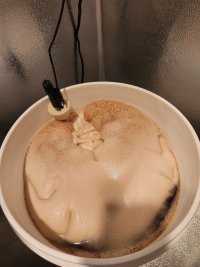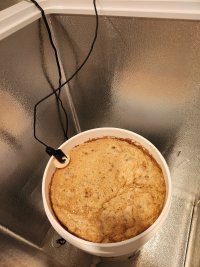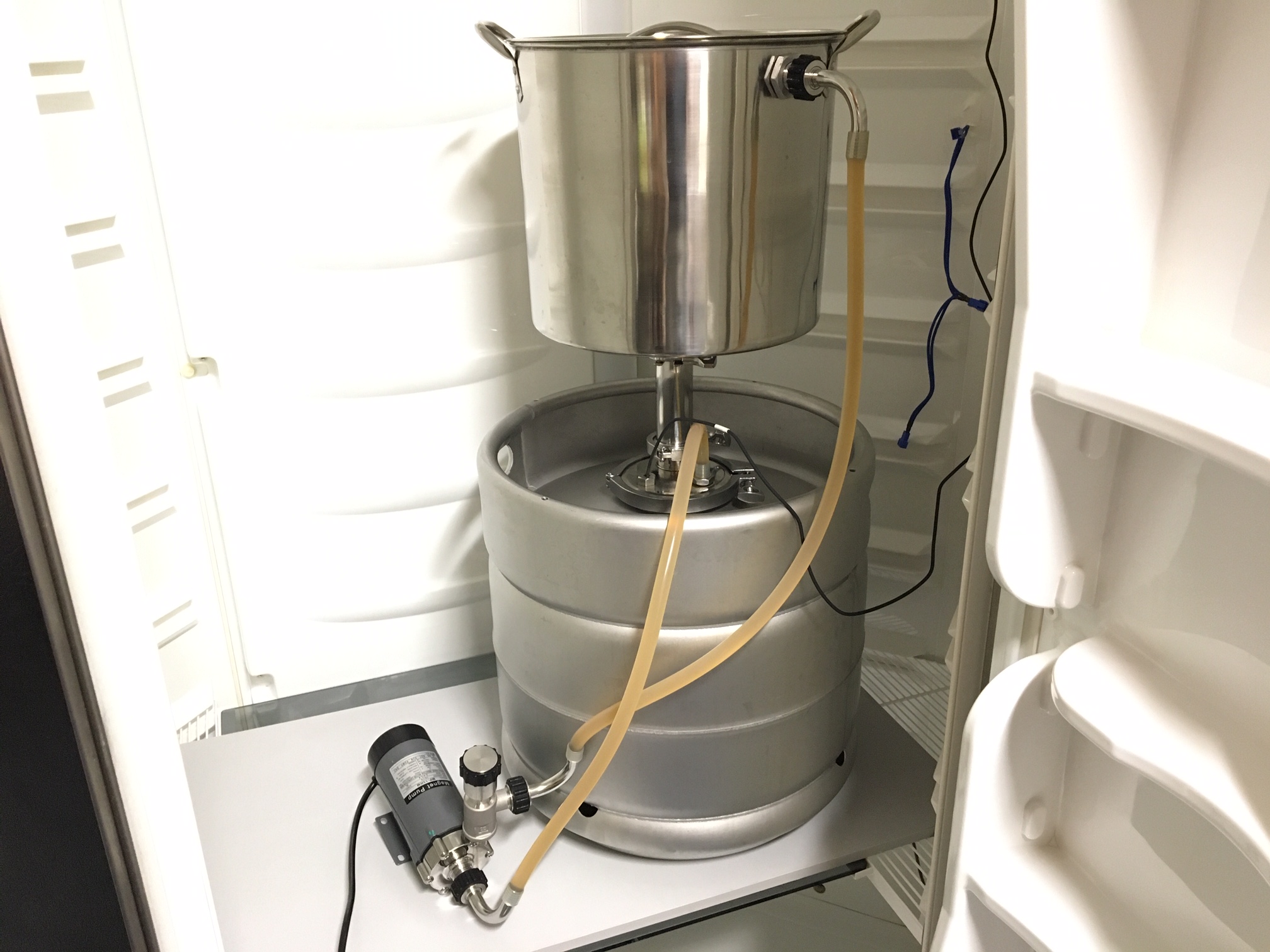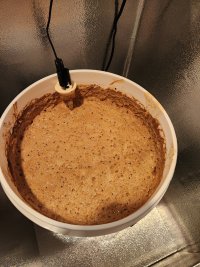youngson616
Well-Known Member
- Joined
- Mar 16, 2022
- Messages
- 138
- Reaction score
- 43
Is this a thing? Seems like most people use a style that likes the tempature of a basement perhaps and ferment openly down there. Just curious what others do for this as far as open ferment temp control.
I open ferment in a bucket in a closed chest freezer with my tempature probe in an open cup half filled with sanitizer solution. The temp swings are moderate, about 3 degrees right now, would like closer to 1 +/- . This time around I rigged up a plastic siphon clamp and shoved it through my carboy probe, and slid the probe in there.
What are yall doing??
I open ferment in a bucket in a closed chest freezer with my tempature probe in an open cup half filled with sanitizer solution. The temp swings are moderate, about 3 degrees right now, would like closer to 1 +/- . This time around I rigged up a plastic siphon clamp and shoved it through my carboy probe, and slid the probe in there.
What are yall doing??





































![Craft A Brew - Safale BE-256 Yeast - Fermentis - Belgian Ale Dry Yeast - For Belgian & Strong Ales - Ingredients for Home Brewing - Beer Making Supplies - [3 Pack]](https://m.media-amazon.com/images/I/51bcKEwQmWL._SL500_.jpg)



























